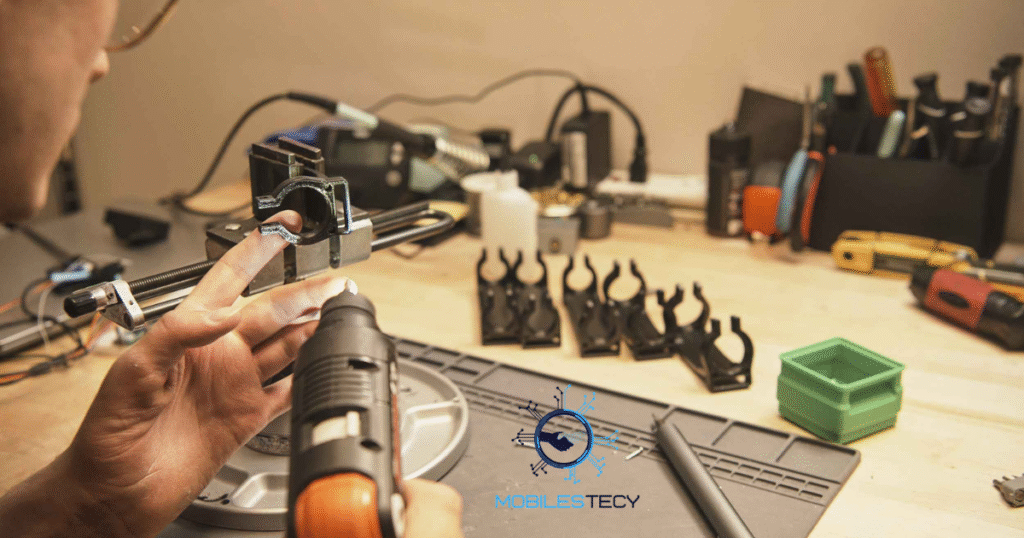Assistive technology plays an important role in supporting individuals with disabilities worldwide. It covers a wide spectrum from advanced digital devices to basic tools. Among these, low-tech solutions are simple, affordable, and highly impactful. They enable independence, communication, learning, and mobility in everyday situations. Their simplicity makes them accessible to people of all ages and backgrounds.
Low-tech assistive technology requires minimal training, electricity, or complicated maintenance needs. It focuses on usability, reliability, affordability, and accessibility for diverse populations. Examples include magnifying glasses, picture boards, canes, and adapted classroom materials. These tools help individuals perform tasks independently with dignity and confidence. They represent life-changing supports despite their humble and straightforward designs.
The growing demand for inclusivity highlights the importance of low-tech innovations. While high-tech tools dominate media, simpler aids remain equally significant. They address daily barriers faced in education, healthcare, and independent living. Their affordability ensures they reach underserved communities lacking costly alternatives. Thus, low-tech adaptive technology continues empowering millions through practical accessibility solutions.
Table of Contents
What is Low-Tech Assistive Technology?

Low-tech assistive technology refers to simple tools supporting people with disabilities. It includes items requiring no electricity, software, or advanced programming knowledge. These tools are designed for everyday use, emphasizing simplicity and affordability. Examples include slant boards, canes, magnifiers, and basic communication picture boards. They focus on practical independence, rather than sophisticated high-tech digital solutions.
Unlike high-tech devices, low-tech tools are widely accessible and affordable. They require little training, making them suitable for children and adults. Their designs are flexible, adaptable, and often customized to user needs. In developing countries, they offer reliable solutions where resources are limited. These tools bridge significant gaps in accessibility for vulnerable communities worldwide.
Low-tech assistive tools are used in homes, schools, and healthcare centers. They help children learn, seniors remain active, and patients recover mobility. Teachers prefer them because they are less disruptive and easy to use. Caregivers rely on them since they need minimal supervision or technical knowledge. Overall, they remain indispensable in promoting inclusion, participation, and equal opportunities.
- Low-tech assistive technology focuses on simplicity, affordability, and universal accessibility.
- These tools require no electricity, programming, or complex software applications.
- Examples include walking canes, communication boards, magnifying glasses, and pencil grips.
Benefits of Low-Tech Adaptive Technology

Low-tech assistive tools promote independence by supporting everyday essential human activities. They allow people to eat, write, walk, or communicate without constant assistance. Affordability ensures low-income families access helpful supports without financial struggles. This accessibility makes them a cornerstone of inclusive practices worldwide today.
These tools encourage participation in schools, workplaces, and community environments alike. By removing barriers, they reduce isolation and support emotional well-being. They improve self-confidence as individuals manage tasks successfully without external dependency. Such benefits demonstrate their critical value across diverse societies and populations.
Importance of Low-Tech Adaptive Technology
Low-tech assistive technology ensures individuals with disabilities live more independent lives. It reduces dependency on caregivers by supporting everyday tasks with confidence. These tools improve education, communication, and physical mobility across different environments. Affordability makes them particularly useful for low-income families and resource-limited institutions. They create equal opportunities for participation in learning and community activities.
Accessibility is another key reason for their widespread importance and value. Unlike high-tech solutions, these tools are affordable and easy to distribute. They reach people in rural or underprivileged areas where resources lack. Their simplicity encourages consistent use, reducing frustration and abandonment by users. Practicality ensures these supports remain vital for everyday human functioning.
Reliability makes them especially valuable in environments with inconsistent electricity supply. They function without batteries, internet access, or advanced technical assistance. This makes them especially useful in emergencies and low-resource conditions. Furthermore, low-tech devices complement high-tech ones as reliable backup options. Together, they create inclusive ecosystems supporting accessibility for everyone involved.
Challenges of Low-Tech Adaptive Technology

Despite benefits, these tools sometimes lack advanced features or durability requirements. Users may encounter difficulties when devices fail during important daily tasks. Social stigma also discourages individuals from using visible assistive technology devices. This can reduce adoption and limit opportunities for independence and growth.
Customization remains necessary because every user has unique needs and challenges. Teachers, caregivers, or families may not know about available simple tools. Awareness gaps limit usage, despite their affordability and wide accessibility worldwide. Addressing these issues requires education, awareness, and improved product designs.
Role in Education
Low-tech assistive tools ensure classrooms become more inclusive for diverse learners. Pencil grips and slant boards help students improve fine motor writing. Flashcards, charts, and number lines support children struggling with comprehension skills. Such aids enable students to participate actively alongside their classmates daily.
Teachers value these tools because they are affordable, simple, and effective. They require minimal training and easily integrate into existing teaching methods. Students feel supported without feeling singled out through complicated digital devices. Thus, education becomes equitable, inclusive, and empowering for all children.
Examples of Low-Tech Adaptive Technology

Mobility aids like canes, walkers, and crutches support individuals with balance. Wheelchair cushions and gloves enhance comfort and make propulsion more manageable. Grab bars in bathrooms reduce risks of falling for elderly populations. These tools provide freedom of movement without needing expensive electronic alternatives. Their simplicity makes them vital supports across homes, schools, and hospitals.
Communication boards allow non-verbal individuals to express needs through pictures. Alphabet cards and word boards assist in spelling basic daily messages. The Picture Exchange Communication System (PECS) supports children with speech challenges. Such tools strengthen interaction, reducing frustration for both users and caregivers. They highlight the power of simplicity in bridging communication barriers.
Educational aids include pencil grips, slant boards, and color-coded flashcards. They help children with motor challenges, dyslexia, and attention difficulties. Visual schedules assist students with autism in organizing daily learning activities. Number lines and graphic organizers simplify mathematical and reading comprehension skills. These low-tech tools empower learners by making education more inclusive everywhere.
- Communication boards allow non-verbal users to express thoughts and feelings.
- Pencil grips and slant boards improve handwriting posture for young students.
- Magnifiers and large-print texts assist people with vision impairments significantly.
Future of Low-Tech Adaptive Technology

The future of low-tech assistive technology remains promising and highly relevant. It will not disappear despite technological advancements in digital high-tech solutions. Affordability, simplicity, and reliability guarantee continuous widespread adoption worldwide. Future innovations will improve design, comfort, and sustainability for diverse communities.
Low-tech devices will complement high-tech tools, serving as reliable backup supports. They will remain useful where electricity, internet, or resources are unavailable. Creative designs may combine sustainability with local cultural adaptation and usage. Such developments will ensure inclusivity continues advancing for future global generations.
- Grab bars, walkers, and crutches provide mobility support for elderly populations.
- Low-tech devices remain affordable, reliable, and accessible in rural communities.
- Stigma sometimes prevents users from confidently adopting adaptive technology openly.
- Teachers and caregivers prefer low-tech tools for their simplicity and effectiveness.
- The future of low-tech assistive technology remains strong and sustainable.
Faq’s
What is low-tech assistive technology and why is it important?
Low-tech assistive technology includes simple, affordable tools supporting daily independence. It is important because it promotes accessibility, inclusion, and equal opportunities.
How does low-tech adaptive technology differ from high-tech alternatives?
Low-tech tools require no electricity, programming, or advanced software systems. High-tech tools involve digital devices, electronic systems, and often higher costs.
What are some common examples of low-tech adaptive technology devices?
Examples include walking canes, magnifiers, pencil grips, and communication boards. These tools assist with mobility, learning, communication, and vision-related tasks.
Who can benefit from using low-tech assistive technology the most?
Examples include walking canes, magnifiers, pencil grips, and communication boards. These tools assist with mobility, learning, communication, and vision-related tasks.
Will low-tech adaptive technology still matter in the future ahead?
Yes, it will remain relevant because of affordability and reliability. It complements high-tech devices and supports areas with limited available resources.
Conclusion
Low-tech assistive technology proves that simplicity can transform everyday human lives. It supports independence, mobility, communication, and education for diverse populations worldwide. Unlike high-tech tools, it remains affordable, practical, and highly accessible. Its reliability ensures consistent use without electricity, software, or advanced systems. Such simplicity ensures inclusion and dignity for individuals with special needs.
Despite challenges like stigma, limited features, or durability-related issues, effectiveness remains strong. Users continue benefiting from tools like canes, slant boards, and magnifiers. Teachers and caregivers rely on them due to practicality and affordability. These tools reduce barriers, empower communities, and promote inclusive participation worldwide. Their significance highlights the importance of awareness, innovation, and accessibility today.
Looking forward, low-tech solutions will remain relevant for future generations globally. They will complement high-tech devices while providing sustainable, dependable accessibility supports. Design improvements will enhance comfort, adaptability, and cultural acceptance in diverse regions. Affordability guarantees continued usage in underserved communities across developing nations.
Read more latest Articles on Mobilestecy.com








